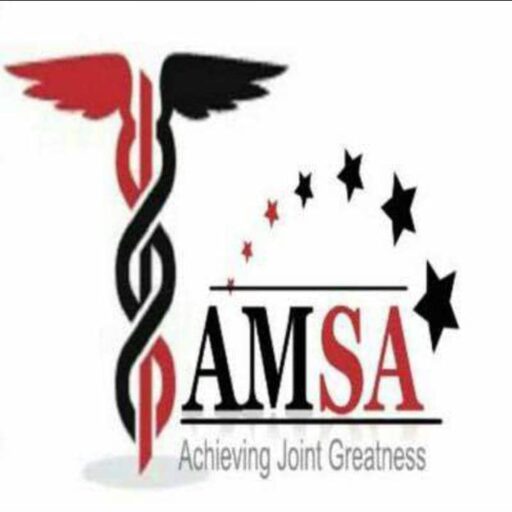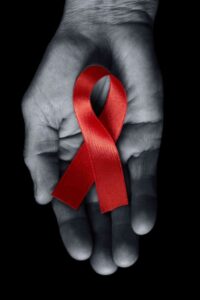
INTRODUCTION
Many times we have heard of people with no prior complaint of any clinical condition, just suddenly slump and die on the spot. A majority of such reported cases are a result of disease condition called HYPERTENSION. Hypertension is a leading cause of morbidity and mortality in Africa and Nigeria, the most populous country in the continent hugely contributing to this burden.
DEFINITION AND TYPES
Hypertension (HTN) is also known as High Blood Pressure. It is when there is an abnormally persistent high arterial blood pressure. Blood pressure is the force exerted by circulating blood against the walls of the body’s arteries,the major blood vessels in the body.
Normal blood pressure value is a systolic BP < 120mmHg and diastolic BP < 80mmHg. Hypertension on the other hand, is a systolic BP > 140mmHg and/or diastolic BP level ≥ 90mmHg. There are two (2) types of hypertension depending on etiology: – ‘Primary/Essential’ hypertension and ‘Secondary’ hypertension.
—Essential hypertension is the most prevalent type affecting 90-95% of hypertensive patients. It is defined as high BP in which secondary causes such as renovascular disease, renal failure, pheochromacytoma, aldosteronism, or other causes of secondary hypertension or mendelian forms (monogenic) are not present.
—Approximately 5-10% of hypertensive patients are identifiable with Secondary hypertension. This is hypertension caused by another underlying medical condition. The causes may include: renal disease (renal artery stenosis), obstructive sleep apnea, cushing’s syndrome etc.
EPIDEMIOLOGY
The prevalence of hypertension varies across the WHO regions and country income groups. The WHO African region has the highest prevalence of hypertension of 27% compared to the Americas – 18%.
The burden of hypertension both globally and in Nigeria is rising. We are suffering the effects of this more in Nigeria due to the fact that the healthcare attention has been lopsidedly focused on infectious and communicable diseases like malaria; HIV/AIDS without taking into cognizance that hypertension is the most dangerous non-communicable disease. The mortality rate and figures available can attest to this fact.
Hypertension is seen more in adults and those above the ages of 65-70. However, on few occasions hypertension can occur in children and adolescents. Many authors have studied the prevalence of hypertension in children and adolescents in Nigeria, and have reported values ranging from 0.1-17.5%. This may seem to be low but it is still a significant percentage. It is a cause for worry because if left unnoticed, it begins in early childhood and then tracks into adult life where it is harder to manage. Hypertension can also occur in pregnancy. Here, it is termed ‘Pre-eclampsia’. It occurs about 20th week of gestation. This affects development of organs ( e.g placenta) and may also lead to seizures (eclampsia). Not only is the mother’s health in danger, but the baby can be impacted negatively too. However, there have been difficulties in pinpointing the exact cause of pre-eclampsia in pregnancy.
ETIOLOGY AND RISK FACTORS
Hypertension is a major public health problem and several predispose individuals to hypertension.
1. AGE: Adults and elderly people are more susceptible to high blood pressure than children and adolescents. As one ages, the blood vessels gradually lose some of their elastic quality, which can also contribute to increased blood pressure.
2. GENDER: One common misconception is that hypertension rarely affects women. Statistics has shown this to be wrong. From childhood to around the age of 64, men are more likely to get hypertension. But from age of 65 and older, women are more susceptible to hypertension. Above we have discussed how health issues like pregnancy are affected by hypertension.
3. GENETIC: In recent years, there has been great progress in elucidating the molecular basis of monogenic disorders with primary effect on blood pressure, and this works has clarified many aspects of blood pressure regulation. Among the most significant findings from this work has been that all known single-gene disorders with primary effect on blood pressure act via a single final common pathway – alteration of renal sodium reabsorption. Hypertension tends to run in families. Individuals whose parents have hypertension have an elevated risk of developing the condition, particularly if both parents are affected. However, the inheritance pattern is unknown.
4. DIABETES: Patients with type 2 diabetes (T2D) have a two- to fourfold higher risk of developing cardiovascular disease than nondiabetic people. Hypertension coexists with type 2 diabetes. It has been suggested that 75% of cardiovascular diseases in patients with diabetes may be attributable to hypertension.
5. DIET: The role of nutrition and how it impacts the normal blood pressure of the body cannot be ignored. Potassium and Sodium are electrolytes needed for the body to function normally and help maintain fluid and blood volume in the body. Excessive intake of sodium can lead to hypertension in the long run. The majority of sodium that people consume comes from processed foods and food prepared in restaurants. The opposite is the case for potassium. It is inadequate consumption of potassium that leads to hypertension. Excessive consumption of cholesterol too causes hypertension. Here, arteries become hardened and narrowed with cholesterol plaque, making the heart strain much harder to pump blood through them.
6. OBESITY: The growing prevalence of obesity is increasingly recognized as one of the most important risk factors for the development of hypertension. Obesity causes accelerated progression of coronary artery calcification and this is a marker of artherosclerosis thereby increasing risk of hypertension. Obesity might lead to hypertension by activating the Renin-Angiotensin-Aldosterone system, by increasing sympathetic activity, by promoting insulin resistance and leptin resistance, by increased procoagulatory activity and by endothelial dysfunction.
COMPLICATIONS
Hypertension is often called the ‘silent killer’ because it is a disease that shows no early symptoms, and simultaneously is the single most significant risk factor for heart disease. The complications that result from hypertension are either related to sustained blood pressure elevation with consequent changes in heart and its vasculature, or to accompanying artherosclerosis that is accelerated by long-standing hypertension.
—One of the most common complications of hypertension is Heart attack otherwise known as Myocardial Infarction. Trapped cholesterol plaques can hinder easy flow of blood in the vessels. Blockage of one of the heart’s coronary arteries causes heart attack.
—Hypertension can cause Stroke through many mechanisms. A high intra luminal pressure will lead to extensive alteration in endothelium and smooth muscle function in intra cerebral arteries. This can then result in stroke. Stroke is devastating because the brain tissue no longer revives nutrients and oxygen to the affected area, which begins to die.
— It can cause Kidney damage . The kidney as we all know plays a role in ultrafiltration . However, blood vessels in the kidney narrow and are weakened as a result of hypertension. This creates extra stress on the kidneys. There is then an accumulation of excess waste and fluid from the body which the kidney cannot filter and excrete as it is overworked already. This excess fluid then raises the blood pressure even more through a positive feedback mechanism creating a vicious and dangerous cycle. Over time the kidney is damaged.
MANAGEMENT
For hypertension and other cardiovascular diseases alike, prevention is always highly advised as the treatment comes in the form of palliative treatment. Effective management and treatment of hypertension requires clinicians and patients to work together in order to prevent target organ damage.
Treating hypertension can take a multi pronged approach including:
a. A non-pharmacologic approach (lifestyle modification) – diet changes, regular aerobic exercise, cessation of smoking, limit alcohol intake.
b. A pharmacologic approach (medication) – There are several types of drugs used to treat high blood pressure , including: Angiotensin-Converting Enzyme (ACE) inhibitors, Angiotensin II receptor blockers (ARBs), Diuretics, Beta-blockers, Calcium channel blockers, Alpha blockers, Alpha-agonists, Renin inhibitors, and other combination medications. However, it is worthy of note that diuretics are often recommended as the first line of therapy for most people who have hypertension i.e. low- dose thiazides.
This drug therapy should be followed up with proper dieting (free of sodium and containing potassium) and regular hospital check-ups atleast twice a month until the blood pressure goal is reached.
CONCLUSION
World Heart Day serves to remind us how important and imperative it is for us to take care of our hearts to guard against life-threatening cardiovascular diseases like Hypertension. Elevated blood pressure though asymptomatic can be effectively managed if discovered on time. We are all implored to live consciously and ensure we go for medical check-ups regularly. The saying goes “Health is wealth” and we should not leave anything to chance.

Written by Nwokpor Collins, 300L
REFERENCES:
(2012, November). Genetic Predisposition to High Blood Pressure Associates With Cardiovascular Complications Among Patients With Type 2 Diabetes. Retrieved from https://diabetes.diabetesjournals.org/content/61/11/3026
(2006, February). Obesity and hypertension – the issue is more complex than we thought. Retrieved from https://academic.oup.com/ndt/article/21/2/264/1850864
(2019, February). Heart Attack (Myocardial Infarction) Retrieved from: https://www.health.havard.edu/a_to_z/heart-attack-myocardial-infarction-a-to-z
An Overview of High Blood Pressure Treatment. Retrieved from https://www.webmd.com/hypertension-high-blood-pressure/guide/hypertension-treatment-overview
(2011) S. Katarazyna et al. Hypertension – The Silent Killer. Journal of Pre-clinical and Clinical Research. Vol 5. No 2. Pg 43-46. Retrieved from: www.jpccr.eu




This is very nice
Interesting and detailed
👏👏